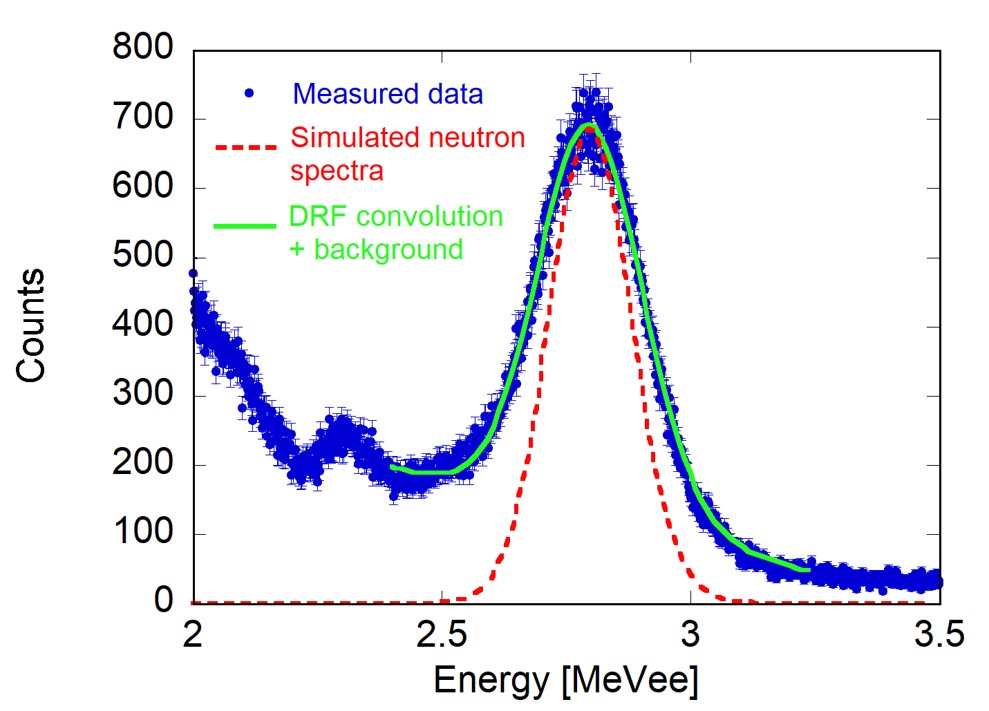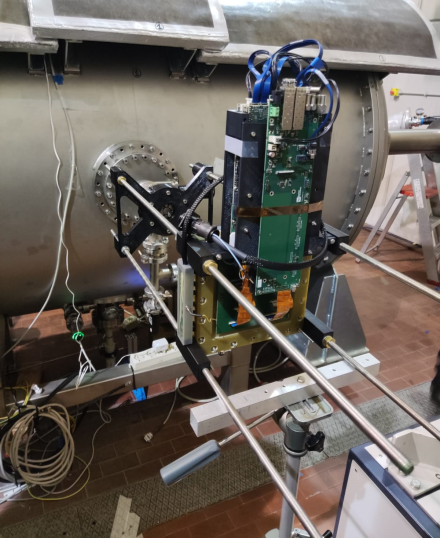RESEARCH UNIT: ISTP-Milano
WP LEADER: MARCO TARDOCCHI
The neutron and gamma-ray laboratory at ISTP-MI specializes in designing, assembling, and characterizing radiation detectors used for nuclear diagnostics in fusion plasmas. In the past 20 years, the laboratory has successfully implemented state-of-the-art diagnostics at the Joint European Torus tokamak in the United Kingdom. These include diamond-based 14 MeV neutron spectrometers, high-resolution gamma-ray spectrometers, and an upgraded gamma-ray camera. ISTP-MI has recently expanded its know-how to include soft X-ray systems based on gas detectors. Neutron and gamma-ray diagnostics are crucial for the future of deuterium-tritium reactors that aim to demonstrate the feasibility of commercial fusion energy. Measuring fusion-generated power, which is essential for determining a DT power plant's performance, can only be done through absolute counting of 14 MeV neutrons or the associated 17 MeV gamma-ray emission. ISTP-MI pioneered this second measurement in tokamaks, which can provide an independent estimate of fusion power, a critical requirement for power plant commissioning.
The project will build and install two innovative diagnostics for neutron imaging and soft X-ray emissions at RFX-MOD2.
A GEM detector-based soft X-ray imaging system that can provide high spatial resolution (ranging from 1 to 20 mm), extremely high time resolution (10-100 microseconds), and spectroscopic energy information (with an energy resolution of about 15-20% at 10 keV). This newly developed GEM X-ray imaging camera is the first of its kind, combining these features. It will be beneficial for analyzing the role played by magnetic topology on impurities' behavior. Specifically, the core 3D magnetic perturbations of the plasma column in the reversed-field pinch configuration can impact plasma boundary, plasma-wall interaction, and impurity penetration. Moreover, the continuous X-ray emission spectrum in the range of up to 20 keV will provide valuable information about electron acceleration during magnetic reconnection processes, which is similar to phenomena observed in astrophysical plasmas.
The second diagnostic system is a neutron camera that will be the first to combine both plasma information on the neutron spatial emission and the energy of the emitted neutron, with a count rate capability of up to 1 MHz. The neutron camera will offer important insights into reversed-field pinch physics, particularly related to global magnetic reconnection processes that can induce the conversion of magnetic energy into kinetic energy. This conversion, whose physical origin is still under debate, is primarily observed in terms of ion heating and acceleration and the subsequent transient enhancement of the neutron rate. Additionally, by combining pulsed high-energy neutral beam injection and neutron detection, the fast particle confinement properties of the reversed-field pinch will be studied.
This work package aims to enhance the laboratory's capabilities in developing, constructing, and testing nuclear diagnostics for fusion plasmas. This will involve acquiring a clean room for the realization of Gas Electron Multiplier (GEM) detectors to improve the detector assembly capability. Additionally, a set of 3D printers will be purchased to enable the laboratory to assemble prototypes with larger dimensions, a greater variety of materials, and faster throughput than what is currently attainable. This work package will also provide an irradiation area where the detectors will be tested under X-ray and gamma-ray radiations.
PHASE 1
Installation of clean room and 3D printers
PHASE 2
Realization of GEM Soft-X camera and neutron camera for RFX-mod2
PHASE 3
Test of neutron camera prototype at neutron sources
PHASE 4
Installation of soft-X ray and neutron camera at RFX-mod2
 English
English  Italiano
Italiano 

